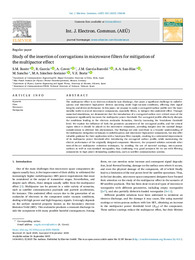Please use this identifier to cite or link to this item:
https://hdl.handle.net/11000/37446Full metadata record
| DC Field | Value | Language |
|---|---|---|
| dc.contributor.author | Bonte, S.M. | - |
| dc.contributor.author | García, R. | - |
| dc.contributor.author | Coves, Angela | - |
| dc.contributor.author | García Barceló, J.M. | - |
| dc.contributor.author | San Blas, A.A. | - |
| dc.contributor.author | Sancho, M. | - |
| dc.contributor.author | Sánchez Soriano, M.A. | - |
| dc.contributor.author | Boria, V.E. | - |
| dc.contributor.other | Departamentos de la UMH::Ingeniería de Comunicaciones | es_ES |
| dc.date.accessioned | 2025-09-22T10:30:04Z | - |
| dc.date.available | 2025-09-22T10:30:04Z | - |
| dc.date.created | 2025-09-16 | - |
| dc.identifier.citation | International Journal of Electronics and Communications 202 (2025) | es_ES |
| dc.identifier.issn | 1618-0399 | - |
| dc.identifier.issn | 1434-8411 | - |
| dc.identifier.uri | https://hdl.handle.net/11000/37446 | - |
| dc.description.abstract | The multipactor effect is an electron avalanche type discharge, that poses a significant challenge in radiofrequency and microwave high-power devices operating under high-vacuum conditions, affecting their signal integrity and device performance. In this paper, we propose to apply a corrugated surface profile over the inner metallic walls in several microwave components, especially filters, to mitigate this undesired effect. Through numerical simulations, we demonstrate that the introduction of a corrugated surface over critical areas of the component significantly increases the multipactor power threshold. The corrugated profile effectively disrupts the conditions leading to the electron avalanche formation, thereby increasing the breakdown threshold level. We explore the influence of both the geometric parameters of the corrugated profile, and the critical region where it should be placed in the microwave component, providing insights into the optimal design considerations to alleviate this phenomenon. Our findings not only contribute to a broader understanding of the multipactor mitigation techniques in radiofrequency and microwave high-power components, but also offer valuable guidance for their application with a band-pass filter example, resulting in a substantial improvement of its multipactor power threshold after introducing the corrugated surface profile, while maintaining the electric performance of the originally designed component. Moreover, the proposed solution outstands other state-of-the-art multipactor reduction techniques, by avoiding the use of material coatings, micro-porous surfaces as well as non-standard waveguides, thus confirming very good prospects for its use with filtering components in high power demanding applications, such as satellite communication systems. | es_ES |
| dc.format | application/pdf | es_ES |
| dc.format.extent | 10 | es_ES |
| dc.language.iso | eng | es_ES |
| dc.publisher | Elsevier | es_ES |
| dc.rights | info:eu-repo/semantics/openAccess | es_ES |
| dc.rights | Attribution-NonCommercial-NoDerivatives 4.0 Internacional | * |
| dc.rights.uri | http://creativecommons.org/licenses/by-nc-nd/4.0/ | * |
| dc.subject | Filter | es_ES |
| dc.subject | Microwave | es_ES |
| dc.subject | Multipactor | es_ES |
| dc.subject.other | CDU::6 - Ciencias aplicadas::62 - Ingeniería. Tecnología | es_ES |
| dc.title | Study of the insertion of corrugations in microwave filters for mitigation of the multipactor effect | es_ES |
| dc.type | info:eu-repo/semantics/article | es_ES |
| dc.relation.publisherversion | https://doi.org/10.1016/j.aeue.2025.156036 | es_ES |

View/Open:
1-s2.0-S1434841125003772-main.pdf
2,84 MB
Adobe PDF
Share:
.png)
